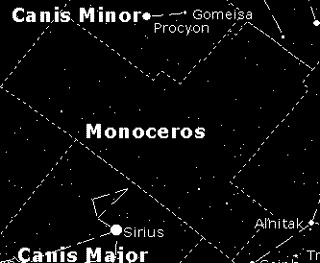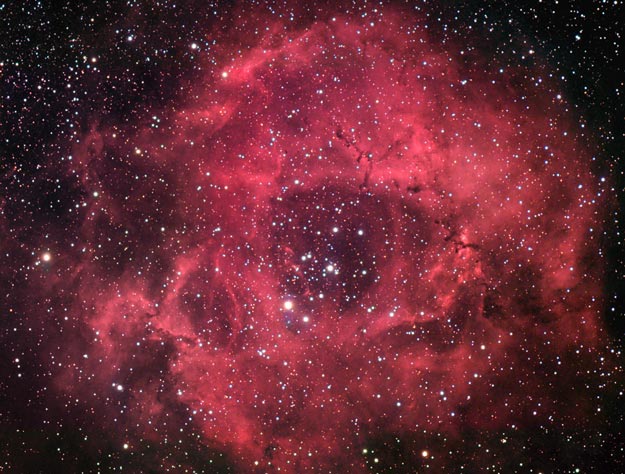Vacation Announcement
I will be on vacation from June 2nd through June 9th.
If anyone would like to volunteer to post APOD during that time, please FReepmail me.
Otherwise the APOD will not be posted as I will be visiting relatives in California.
Here is the location of the constellation Monoceros (Unicorn).

Rosette Nebula and its statistics

The Rosette Nebula is a vast cloud of dust and gas, extending over an area of more than 1 degree across, or about 5 times the area covered by the full moon. Its parts have been assigned different NGC numbers: 2237, 2238, 2239, and 2246. Within the nebula, open star cluster NGC 2244 is situated, consisted of the young stars which recently formed from the nebula's material, and the brightest of which make the nebula shine by exciting its atoms to emit radiation.
| Rosette Nebula NGC 2237-9,46 |
NGC 2244 |
|
|---|---|---|
| Right Ascension | 06 : 32.3 (h:m) | 06 : 32.4 (h:m) |
| Declination | +5 : 03 (deg:m) | +4 : 52 (deg:m) |
| Distance | 5.5 (kly) | 5.5 (kly) |
| Visual Brightness | ? (mag) | 4.8 (mag) |
| Apparent Dimension | 80x60 (arc min) | 24 (arc min) |
You can find the associated star cluster with binoculars, but the nebulosity is elusive visually. Objects like this are at their best when imaged. The following image is a drawing of what the artist saw through a 14-inch Dobsonian telescope.

Contrast that with red-sensitive film photography or CCD imaging:

Finder chart for NGC 2244, among other things...

